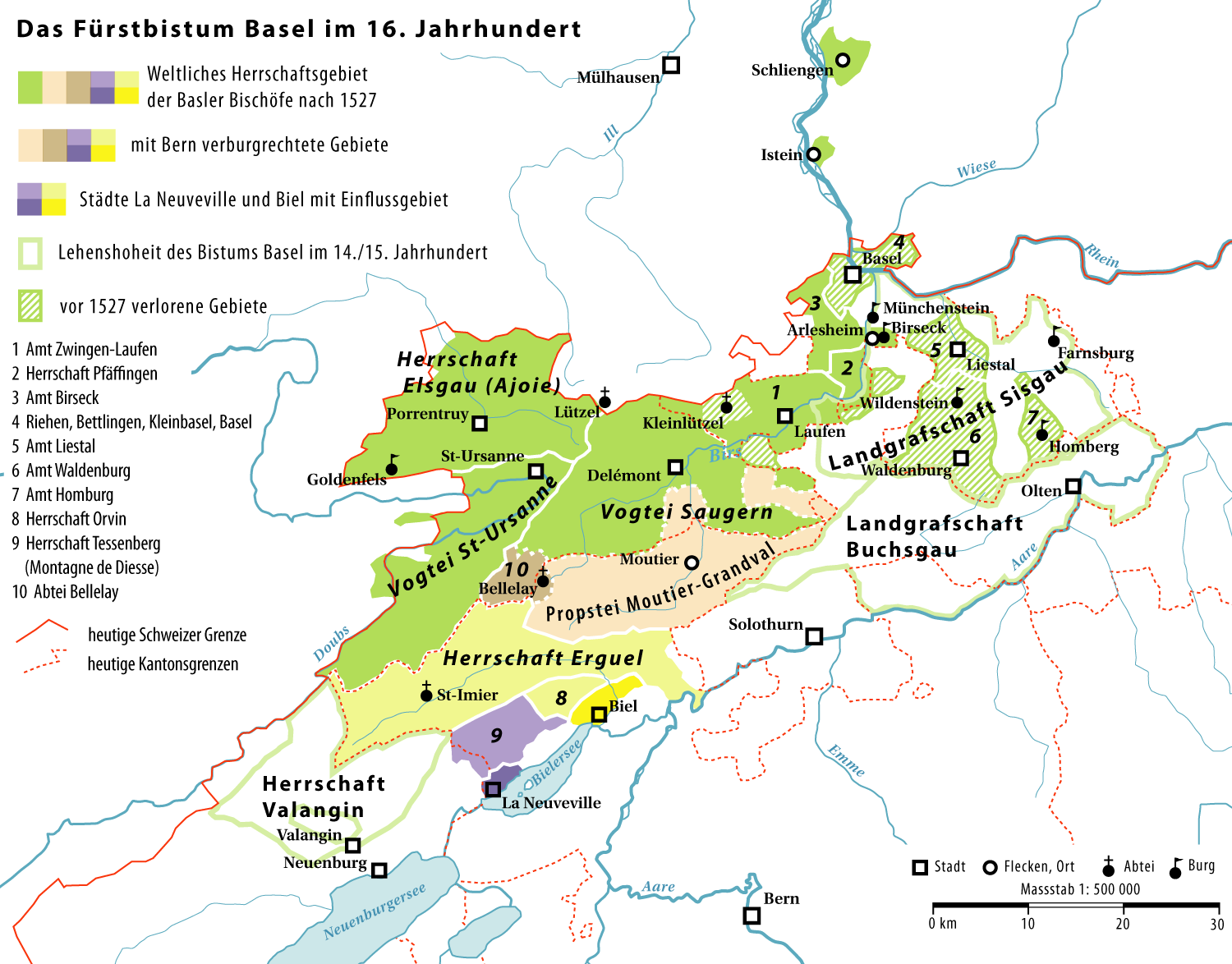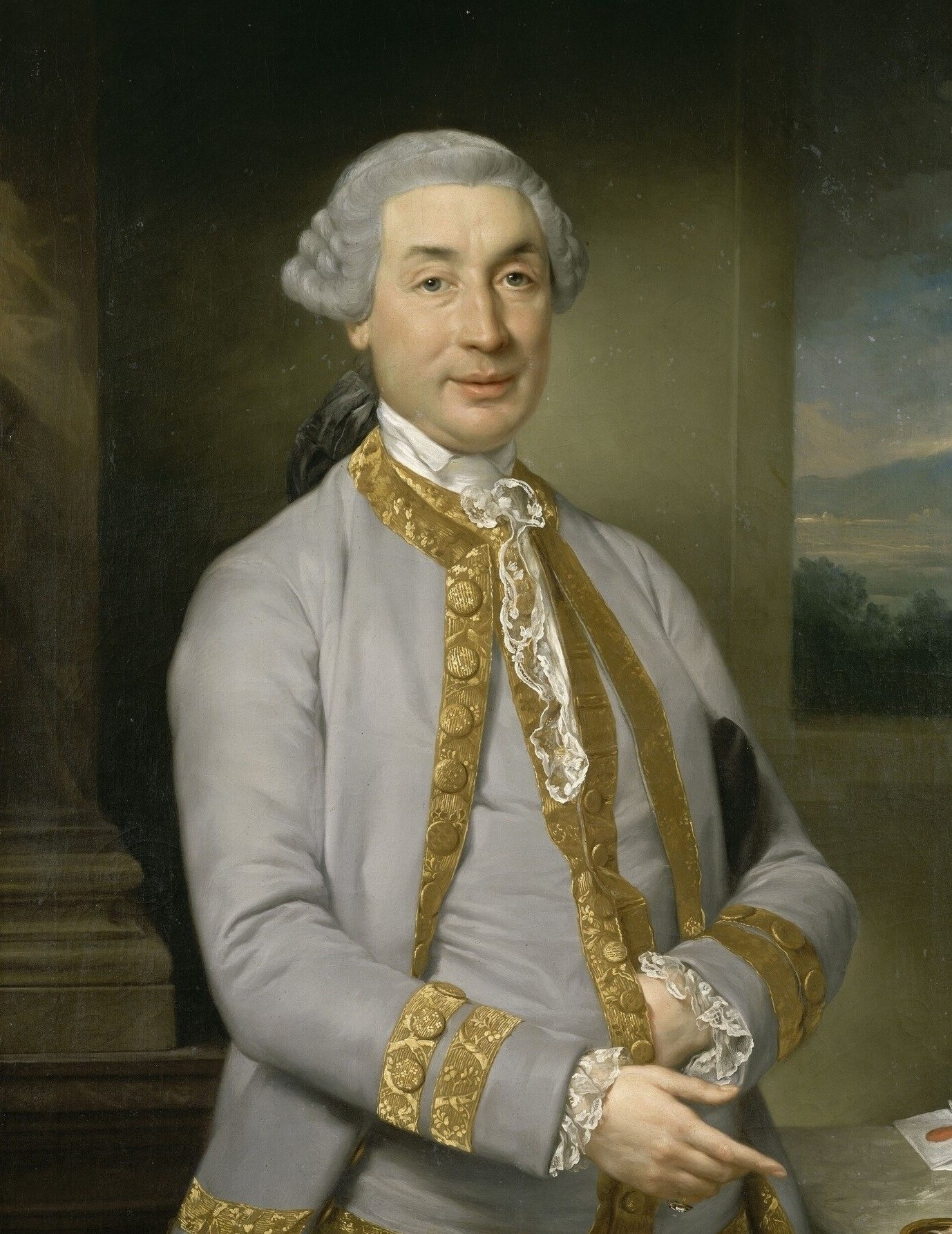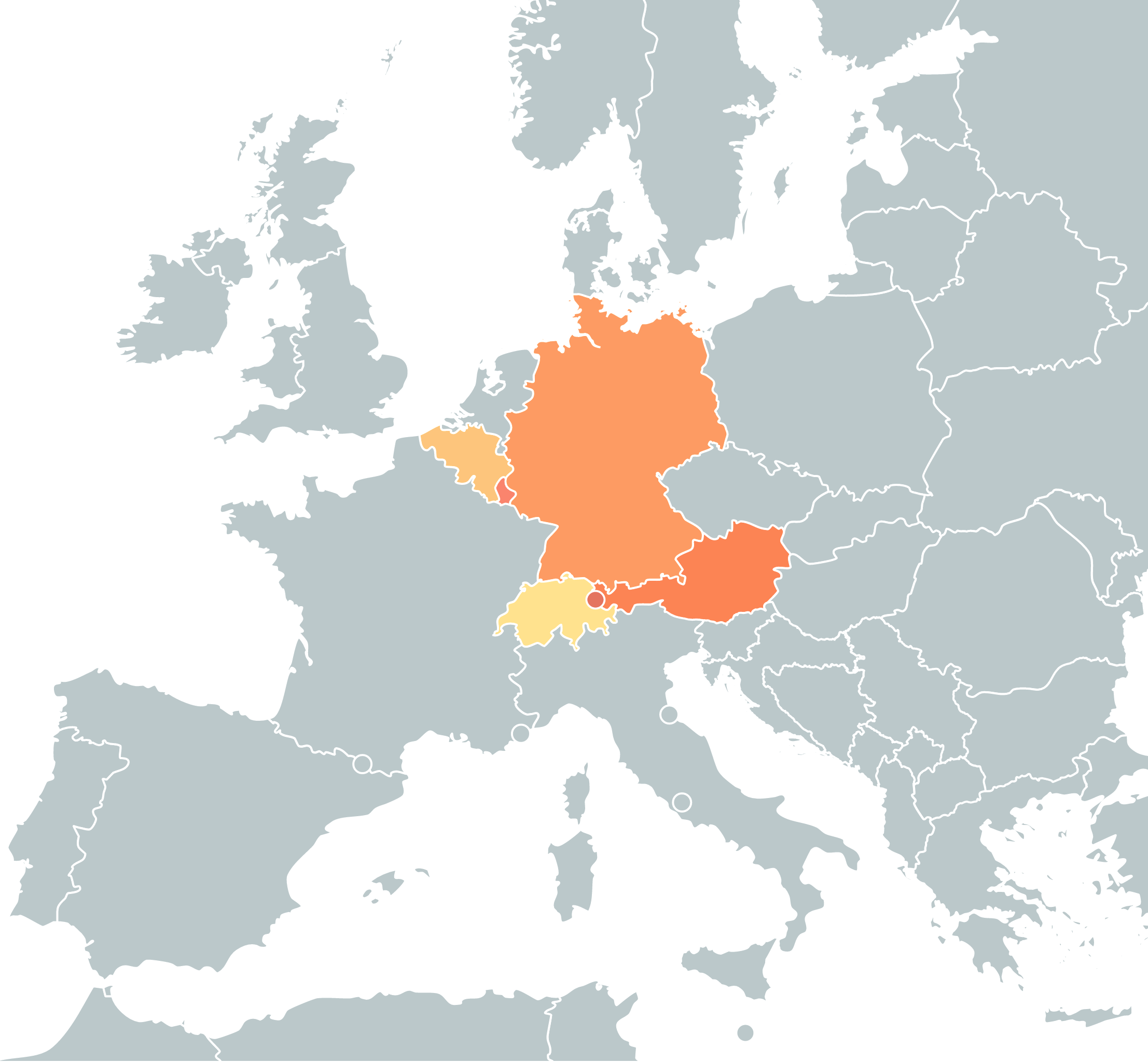|
Belprahon 200
Belprahon () is a municipality in the Jura bernois administrative district in the canton of Bern in Switzerland. It is located in the French-speaking part of the canton in the Jura mountains. History Belprahon was formerly known by its German name, ''Tiefenbach'', though this name is no longer used. Throughout most of its history, Belprahon was part of the lands of Moutier-Grandval Abbey and the Abbey's college of canons. After the 1797 French victory and the Treaty of Campo Formio, Belprahon became part of the French Département of Mont-Terrible. Three years later, in 1800 it became part of the Département of Haut-Rhin. After Napoleon's defeat and the Congress of Vienna, Belprahon was assigned to the Canton of Bern in 1815. The village was bypassed by the major roads through the Grand Val and so for most of its history was generally rural and agricultural. In the 1960s many commuters moved into the village and by 1990 three-quarters of the working population commuted ... [...More Info...] [...Related Items...] OR: [Wikipedia] [Google] [Baidu] |
Jura Bernois (administrative District)
Bernese Jura (french: Jura bernois, ) is the name for the French-speaking area of the Switzerland, Swiss canton of Bern, and from 2010 one of ten Administrative divisions of Switzerland, administrative divisions of the Cantons of Switzerland, canton. Comprising the three French-speaking districts in the northern part of the Cantons of Switzerland, canton, it contains 40 municipalities with an area of and a population () of . More than 90% of the population of the three districts speak French. The Bernese Jura of today comprises only three out of a total of seven districts which were known as the Bernese Jura during the period of 1815–1979. Of the remaining four, three seceded as the canton of Jura in 1979, while the fourth, the Laufen district, joined the canton of Basel-Landschaft in 1994. Additionally, Moutier, a municipality, voted to secede from Bern in a referendum in 2021 and join Jura, with the changeover expected to be implemented by 2026. History Most of the ter ... [...More Info...] [...Related Items...] OR: [Wikipedia] [Google] [Baidu] |
Napoleon
Napoleon Bonaparte ; it, Napoleone Bonaparte, ; co, Napulione Buonaparte. (born Napoleone Buonaparte; 15 August 1769 – 5 May 1821), later known by his regnal name Napoleon I, was a French military commander and political leader who rose to prominence during the French Revolution and led successful campaigns during the Revolutionary Wars. He was the ''de facto'' leader of the French Republic as First Consul from 1799 to 1804, then Emperor of the French from 1804 until 1814 and again in 1815. Napoleon's political and cultural legacy endures to this day, as a highly celebrated and controversial leader. He initiated many liberal reforms that have persisted in society, and is considered one of the greatest military commanders in history. His wars and campaigns are studied by militaries all over the world. Between three and six million civilians and soldiers perished in what became known as the Napoleonic Wars. Napoleon was born on the island of Corsica, not long aft ... [...More Info...] [...Related Items...] OR: [Wikipedia] [Google] [Baidu] |
Italian Language
Italian (''italiano'' or ) is a Romance language of the Indo-European language family that evolved from the Vulgar Latin of the Roman Empire. Together with Sardinian, Italian is the least divergent language from Latin. Spoken by about 85 million people (2022), Italian is an official language in Italy, Switzerland ( Ticino and the Grisons), San Marino, and Vatican City. It has an official minority status in western Istria (Croatia and Slovenia). Italian is also spoken by large immigrant and expatriate communities in the Americas and Australia.Ethnologue report for language code:ita (Italy) – Gordon, Raymond G., Jr. (ed.), 2005. Ethnologue: Languages of the World, Fifteenth edition. Dallas, Tex.: SIL International. Online version ... [...More Info...] [...Related Items...] OR: [Wikipedia] [Google] [Baidu] |
German Language
German ( ) is a West Germanic language mainly spoken in Central Europe. It is the most widely spoken and official or co-official language in Germany, Austria, Switzerland, Liechtenstein, and the Italian province of South Tyrol. It is also a co-official language of Luxembourg and Belgium, as well as a national language in Namibia. Outside Germany, it is also spoken by German communities in France ( Bas-Rhin), Czech Republic (North Bohemia), Poland ( Upper Silesia), Slovakia (Bratislava Region), and Hungary ( Sopron). German is most similar to other languages within the West Germanic language branch, including Afrikaans, Dutch, English, the Frisian languages, Low German, Luxembourgish, Scots, and Yiddish. It also contains close similarities in vocabulary to some languages in the North Germanic group, such as Danish, Norwegian, and Swedish. German is the second most widely spoken Germanic language after English, which is also a West Germanic language. German ... [...More Info...] [...Related Items...] OR: [Wikipedia] [Google] [Baidu] |
French Language
French ( or ) is a Romance language of the Indo-European family. It descended from the Vulgar Latin of the Roman Empire, as did all Romance languages. French evolved from Gallo-Romance, the Latin spoken in Gaul, and more specifically in Northern Gaul. Its closest relatives are the other langues d'oïl—languages historically spoken in northern France and in southern Belgium, which French (Francien) largely supplanted. French was also influenced by native Celtic languages of Northern Roman Gaul like Gallia Belgica and by the ( Germanic) Frankish language of the post-Roman Frankish invaders. Today, owing to France's past overseas expansion, there are numerous French-based creole languages, most notably Haitian Creole. A French-speaking person or nation may be referred to as Francophone in both English and French. French is an official language in 29 countries across multiple continents, most of which are members of the '' Organisation internationale de la Francopho ... [...More Info...] [...Related Items...] OR: [Wikipedia] [Google] [Baidu] |
Belprahon Vilagha Puto 198
Belprahon () is a municipality in the Jura bernois administrative district in the canton of Bern in Switzerland. It is located in the French-speaking part of the canton in the Jura mountains. History Belprahon was formerly known by its German name, ''Tiefenbach'', though this name is no longer used. Throughout most of its history, Belprahon was part of the lands of Moutier-Grandval Abbey and the Abbey's college of canons. After the 1797 French victory and the Treaty of Campo Formio, Belprahon became part of the French Département of Mont-Terrible. Three years later, in 1800 it became part of the Département of Haut-Rhin. After Napoleon's defeat and the Congress of Vienna, Belprahon was assigned to the Canton of Bern in 1815. The village was bypassed by the major roads through the Grand Val and so for most of its history was generally rural and agricultural. In the 1960s many commuters moved into the village and by 1990 three-quarters of the working population commuted to ... [...More Info...] [...Related Items...] OR: [Wikipedia] [Google] [Baidu] |
Belprahon 200
Belprahon () is a municipality in the Jura bernois administrative district in the canton of Bern in Switzerland. It is located in the French-speaking part of the canton in the Jura mountains. History Belprahon was formerly known by its German name, ''Tiefenbach'', though this name is no longer used. Throughout most of its history, Belprahon was part of the lands of Moutier-Grandval Abbey and the Abbey's college of canons. After the 1797 French victory and the Treaty of Campo Formio, Belprahon became part of the French Département of Mont-Terrible. Three years later, in 1800 it became part of the Département of Haut-Rhin. After Napoleon's defeat and the Congress of Vienna, Belprahon was assigned to the Canton of Bern in 1815. The village was bypassed by the major roads through the Grand Val and so for most of its history was generally rural and agricultural. In the 1960s many commuters moved into the village and by 1990 three-quarters of the working population commuted ... [...More Info...] [...Related Items...] OR: [Wikipedia] [Google] [Baidu] |
Coat Of Arms
A coat of arms is a heraldic visual design on an escutcheon (i.e., shield), surcoat, or tabard (the latter two being outer garments). The coat of arms on an escutcheon forms the central element of the full heraldic achievement, which in its whole consists of a shield, supporters, a crest, and a motto. A coat of arms is traditionally unique to an individual person, family, state, organization, school or corporation. The term itself of 'coat of arms' describing in modern times just the heraldic design, originates from the description of the entire medieval chainmail 'surcoat' garment used in combat or preparation for the latter. Rolls of arms are collections of many coats of arms, and since the early Modern Age centuries, they have been a source of information for public showing and tracing the membership of a noble family, and therefore its genealogy across time. History Heraldic designs came into general use among European nobility in the 12th century. Sys ... [...More Info...] [...Related Items...] OR: [Wikipedia] [Google] [Baidu] |
Blazon
In heraldry and heraldic vexillology, a blazon is a formal description of a coat of arms, flag or similar emblem, from which the reader can reconstruct the appropriate image. The verb ''to blazon'' means to create such a description. The visual depiction of a coat of arms or flag has traditionally had considerable latitude in design, but a verbal blazon specifies the essentially distinctive elements. A coat of arms or flag is therefore primarily defined not by a picture but rather by the wording of its blazon (though in modern usage flags are often additionally and more precisely defined using geometrical specifications). ''Blazon'' is also the specialized language in which a blazon is written, and, as a verb, the act of writing such a description. ''Blazonry'' is the art, craft or practice of creating a blazon. The language employed in ''blazonry'' has its own vocabulary, grammar and syntax, which becomes essential for comprehension when blazoning a complex coat of arms. Other ... [...More Info...] [...Related Items...] OR: [Wikipedia] [Google] [Baidu] |
Belprahon Vilgheniro 192
Belprahon () is a municipality in the Jura bernois administrative district in the canton of Bern in Switzerland. It is located in the French-speaking part of the canton in the Jura mountains. History Belprahon was formerly known by its German name, ''Tiefenbach'', though this name is no longer used. Throughout most of its history, Belprahon was part of the lands of Moutier-Grandval Abbey and the Abbey's college of canons. After the 1797 French victory and the Treaty of Campo Formio, Belprahon became part of the French Département of Mont-Terrible. Three years later, in 1800 it became part of the Département of Haut-Rhin. After Napoleon's defeat and the Congress of Vienna, Belprahon was assigned to the Canton of Bern in 1815. The village was bypassed by the major roads through the Grand Val and so for most of its history was generally rural and agricultural. In the 1960s many commuters moved into the village and by 1990 three-quarters of the working population commuted ... [...More Info...] [...Related Items...] OR: [Wikipedia] [Google] [Baidu] |
Swiss Reformed Church
The Protestant Church in Switzerland (PCS), (EKS); french: Église évangélique réformée de Suisse (EERS); it, Chiesa evangelica riformata in Svizzera (CERiS); rm, Baselgia evangelica refurmada da la Svizra (BRRS) formerly named Federation of Swiss Protestant Churches (SEK); french: Fédération des Eglises protestantes de Suisse (FEPS); it, Federazione delle Chiese evangeliche della Svizzera; rm, Federaziun da las baselgias evangelicas da la Svizra until 31 December 2019, is a federation of 25 member churches – 24 Landeskirche, cantonal churches and the Evangelical-Methodist Church of Switzerland. The PCS is not a church in a theological understanding, because every member is independent with their own theological and formal organisation. It serves as a legal umbrella before the federal government and represents the church in international relations. Except for the Evangelical-Methodist Church, which covers all of Switzerland, the member churches are restricted to a cert ... [...More Info...] [...Related Items...] OR: [Wikipedia] [Google] [Baidu] |





